Phish
| Track | Album |
|---|---|
| Bouncing Around The Room | Lawn Boy |
| Silent In The Morning | Rift |
| Sample In A Jar | Hoist |
| Wolfman's Brother | Hoist |
| Free | Billy Breathes |
| Roggae | The Story Of The Ghost |
| Heavy Things | Farmhouse |
| Crowd Control | Undermind |
| Stealing Time From The Faulty Plan | Joy |
| Devotion To A Dream | Fuego |

Phish (l to r): Page McConnell (keyboards), Mike Gordon (bass), Jon Fishman (drums), Trey Anastasio (guitar) – photo: BC Kagan (1990)
Contributor: Marc Fagel
Wading into Phish for Toppermost has been a particularly daunting task. The Vermont quartet tends to elicit unusually strong reactions from fans and non-fans alike. Those who religiously attend Phish concerts and collect their live recordings (and I count myself among them) are an opinionated bunch, and will almost certainly pick apart any assessment of their music; while those who resist the band’s pull, intimidated by the band’s cult-like reputation or annoyed by its often offbeat songs, tend to reject the band’s music as a matter of principle.
But what the hell, let’s give it a shot and gore a few oxen.
As with many artists falling under the loose ‘jam band’ umbrella, there’s a tendency to favor the band’s live music over its studio releases; I certainly agree that Phish’s albums don’t necessarily convey what it is that drives such fanatical devotion from longtime followers. That said, the band has recorded a number of solid, even great, albums, which can be enjoyed wholly independent of their live mystique.
Still, there is the question of which version of Phish should be documented here. I considered a mix of 10 live tracks, which would probably be the most compelling depiction of the band’s strengths. (Like the Grateful Dead, Phish have officially released a large number of concert recordings, many of which stream on Spotify.) But I don’t think that’s fair game for a Toppermost. I also considered a compilation of the band’s more ambitious, idiosyncratic studio tracks, the songs which, even etched on vinyl, are most distinctively Phish. But while this might please existing fans, it would be unlikely to woo any new listeners.
So instead, I’m offering an entry-level Top 10 focused on the songs that, to my ears, sound the most like classic-rock-worthy tracks that can be enjoyed without any reference to Phish as a live enterprise, or without buying into the more cultish aspects of the band – i.e. the more straightforward ‘pop’ songs one can envision comprising a traditional greatest hits album, were the band ever to deign to release one. The result is a list that may give few indications of what’s made the band one of the most successful touring acts of the past quarter century, but which I think serves as a more user-friendly introduction and makes a strong case for Phish’s bona fides as a top notch, mainstream-adjacent classic rock act.
(I will, however, circle back at the end with a few recommendations for readers intrigued enough to check out the band’s live recordings for a more ‘authentic’ taste of Phish.)
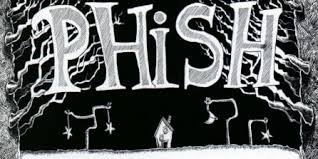
1989-1993
For purposes of this exercise, I’ve broken down the band’s studio discography into three phases. The first of these is the band’s earliest, most outwardly experimental period. While often compared to the Grateful Dead, largely on account of both bands’ reputations as monolithic touring machines whose improvisational work forms the most revered roots of the “jam band” ethos, Phish’s music itself has little in common with the Dead. Rather, the band’s earliest work was an eclectic hodge-podge that drew from prog (particularly Gabriel-era Genesis), the skewed absurdism (and eclectic virtuosity) of Frank Zappa, the artsy funk-tinged experimentation of Talking Heads, and the more traditional straight-ahead rock of Traffic or the Stones.
Some of Phish’s most enduring material was crafted during this period – the complex fugues of You Enjoy Myself and Stash; the artsy prog-like epics such as The Divided Sky and Reba – but they can be a little impenetrable for the newbie. Their second LP, 1990’s Lawn Boy, did offer one of the band’s most concise pop moments in Bouncing Around The Room, which crescendos with a striking vocal round. By 1992’s A Picture Of Nectar, they were starting to rein in some of their more experimental impulses (while retaining the lyrical absurdity and musical playfulness), songs like Cavern and Llama showing a little more comfort crafting simple hooks. 1993’s Rift was cut from the same cloth, some solid, pithier material balancing out the decreasing number of oddball mini-epics; the album included another charming pop song in Silent In The Morning, an admittedly sappy tune that stands out in its merger of the virtuosic fugues of You Enjoy Myself and Bouncing’s vocal round.
1994-2000
1994’s Hoist, while not a clear break from the past, nonetheless ushers in a period of excellent, enduring studio albums, each packed with a fistful of tunes that sound like they were designed more for FM radio airplay that a smoke-filled venue full of stoned fans. Stand-outs like Sample In A Jar, Wolfman’s Brother, Julius, and Down With Disease offer infectious hooks and simplified structures (which isn’t to say they couldn’t serve as launching pads for lengthy jams on the touring circuit, Disease in particular often showing up in extended versions venturing into trippy space odysseys).
After a brief lull (filled by their first official live album, the obviously-titled A Live One), the band returned in 1996 with what many view as their first truly great studio album. Billy Breathes, produced by reliable studio veteran Steve Lillywhite, simply sounds better than anything that had preceded it, coming across like a record by a band shooting for a polished (but not slick) canon-worthy studio confection, not just a blueprint for material that would be taken out on the road. And it’s well-served by some of their best material to date, well-developed songs that retain a novel edge but lose most of the flashier prog shades of the past. Free is a stellar rocker; Theme From The Bottom a slowly-building anthem; the title track and Waste sweetly poignant ballads; and closing Prince Caspian another modest slow-builder with an anthemic vocal hook.
The 1998 follow-up, The Story Of The Ghost, may draw less critical admiration than Billy, but it’s my personal favorite. It offers a broader sonic palette than its predecessor, an amalgam of classic rock structures with touches of jazz, funk, and psychedelia, reviving some of their earlier playful impulses without the excesses. With the exception of the proggy early-period throwback Guyute, it’s packed with shorter tracks, too many stand-outs to mention, though I’m a fan of the mellow, melodic Roggae and the gorgeous harmonies of Brian and Robert (named for ambient masters Eno and Fripp).
2000’s Farmhouse stepped back from Ghost’s sprawl, a return to the more straightforward rock of Billy Breathes, with a particularly solid set of catchy ear candy. The title track and Heavy Things are both sparkling radio-friendly fare, willing to sacrifice fan-service weirdness for insistent hooks, while Back On The Train offers a compelling, rollicking groove. The album also does a better job of catching the band’s live aesthetic than earlier albums, songs like Gotta Jibboo, Sand, and particularly closing instrumental First Tube solidly nailing their stage sound in the context of relatively controlled studio takes.
2002-2020
Following that stellar run of studio albums, the band’s output became both a bit more erratic and, dare I say, interchangeable in the years that followed, though they’ve continued to manage a few stand-out tunes per album right up to the present day. Phish took a two-year touring hiatus after Farmhouse; and after two further studio albums, they underwent a break-up (precipitated in part by singer/guitarist Trey Anastasio’s well-publicized drug problems). But they regrouped in 2008 and have been touring and recording ever since.
I don’t mean to give short shrift to the 6 albums recorded since Farmhouse (7 counting a somewhat underwhelming digital-only release), most of which are perfectly fine (and 2004’s Undermind and 2014’s Fuego in particular hold up well alongside their 90s heyday). But there is a diminution in the number of obvious ‘classics,’ and a certain pattern emerges, each record mixing some straightforward Anastasio-penned rockers, a few (often bland) ballads, some quirky contributions from bassist Mike Gordon and keyboardist Page McConnell, and a couple lengthier tracks destined for full-blown jam treatment on stage.
Several contenders for a novice-friendly hits collection do emerge from their latter-day work. Undermind has another one of Anastasio’s well-crafted pop songs in Crowd Control (lyrically alluding to the unhappiness that precipitated their lengthy hiatus), and one of Gordon’s more amusingly quirky tunes in Access Me. 2009’s Joy offers Stealing Time From The Faulty Plan, a concert staple that capably captures their live energy on record, as well as Ocelot, which may be more fun in its stretched-out live iteration but nonetheless has a playful charm in the studio. They then took a half-decade break, but returned in 2014 with one of their more consistent studio efforts in Fuego, packed with surprisingly catchy pop-tinged tracks like Devotion To A Dream and The Line, the latter buoyed by its clever basketball metaphor.
2016’s Big Boat and this year’s Sigma Oasis – the latter unexpectedly rushed out to market to help fans through the COVID-19 shut-in – blend together a bit for me, though Boat’s Blaze On is a rousing Bo Diddley-ish party song, while Sigma’s Mercury is another one of those laid back jam-friendly songs that holds up ok as a studio tune.

The Live Sampler
As noted, the Top 10 above only aims to capture the more radio-friendly aspects of the band’s extensive studio work. But for a better glimpse at what drives the band’s adoring fan-base, I’m adding 10 (well, 10-ish) live tracks that highlight various facets of Phish’s performances. You’ve got the array of great songs that have been staples since the early days yet never released on a studio album, like Simple, Runaway Jim, and the crowd-pleasing Mike’s Song > Weekapaug Groove suite; studio tracks that blossom into epic monsters on stage, like You Enjoy Myself (or into seemingly endless and random medleys, like a 1994 Tweezer that segued into the Who’s Sparks, the James Gang’s Walk Away, and the Breeders’ Cannonball, among others); and the band’s exploratory ‘ambient’ jams, like a 30-minute headphone-friendly outer space voyage flowing out of a relatively concise Wolfman’s Brother in 1998. The band can also be playful in its choice of cover songs, particularly during the sort-of annual Halloween shows in which they adopt the ‘costume’ of a favorite band and play an album from start-to-finish (examples including the Beatles’ White Album, the Velvet Underground’s Loaded, and the Stones’ Exile On Main Street); most recently, they ‘covered’ a somewhat silly, non-existent album from a wholly fictitious Krautrock band they conjured out of whole cloth.
Here’s about 4 hours of music drawn from live performances available on Spotify (at least here in the States):
Mike’s Song > I Am Hydrogen > Weekapaug Groove – Live In Brooklyn (2006)
Runaway Jim – Star Lake 98
Simple – Vegas 96
You Enjoy Myself – A Live One (1994)
Tweezer (a.k.a. Tweezerfest) – Live Phish Vol.18 (1994-05-07 Dallas Bomb Factory)
Wolfman’s Brother (with ambient jam) – Live Phish Vol.16 (1998-10-31 Las Vegas)
2001 (Strauss’s Also Sprach Zarathustra) – Live Phish Vol.4 (2000-06-14 Fukuoka, Japan)
Crosseyed And Painless (Talking Heads cover) – Coral Sky (1996)
Sweet Jane (Velvet Underground cover) – Live Phish Vol.16 (1998-10-31 Las Vegas)
We Are Come To Outlive Our Brains (Kasvot Växt ‘cover’) – Kasvot Växt: i rokk (2018)
I created a Spotify live playlist; here’s the link.
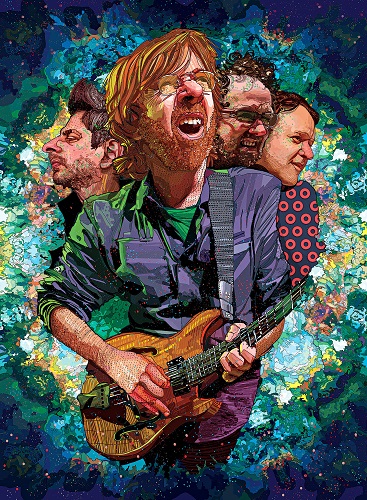
Illustration: Tony Rodriguez

Phish Net – concert history, merchandise, forum etc.
Live Phish (download live music)
Marc Fagel is a recovering lawyer living outside San Francisco with his wife and his obscenely oversized music collection. He is the author of the recently-published rock lover’s memoir “Jittery White Guy Music”. His daily ruminations on random albums in his collection can be seen on his blog of the same name, or by following him on twitter. Marc’s previous posts include Luna, Jesus and Mary Chain, Feelies, Genesis, Wilco, King Crimson and Brian Eno.
TopperPost #893







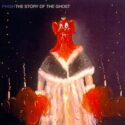


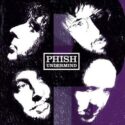
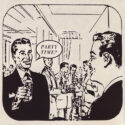



Follow